Dell Announces Alienware Aurora R9: An Ultimate mATX Gaming PC
by Anton Shilov on August 22, 2019 1:00 PM EST
Living up to its status as a high-end, botique system builder, back in early 2019 Alienware rolled out its "Legend" industrial design. Intended to set the brand apart from competitors, the futuristic design ended up being rather different from other gaming PCs available today. Initially Dell used the new industrial design for laptops and monitors, and this week the company rolled out its first Legend-designed mATX desktop in the Alienware Aurora R9.
The Aurora R9 comes in a Lunar Light or Dark Side of the Moon chassis that isn't quite like anything that we have seen before. In fact, it looks more like an item from Portal rather than a desktop computer. It still has AlienFX RGB lighting (two or three zones) for additional personalization, but even out-of-box the system looks unique.
Inside the new Aurora is a Micro-ATX motherboard based on Intel’s Z370 chipset and is compatible with Intel’s 9th Gen Core i3/i5/i7/i9 processors, with the unlocked K-series parts coming factory overclocked to 4.4 GHz - 4.7 GHz depending on the model. Cooling these chips is in turn is a custom Alienware-badged closed-loop liquid cooling system. Meanwhile, as is traditional for Alienware, the chassis features well-thought airflows, allowing the system to keep up with the cooling requirements of the overclocked processors.
Rounding out the package, the CPU can be paired with up to 64 GB of Kingston HyperX DDR4-3200 memory, either an M.2 PCIe 3.0 x4 SSD with capacities up to 2TB or Intel’s Optane Memory caching SSD, and a 2 GB 7200 RPM HDD.
Being aimed at demanding gamers, the Alienware Aurora R9 can be equipped with a wide range of current-generation AMD Radeon RX and NVIDIA GeForce GTX/RTX video cards. The top-of-the-range models will come with either one GeForce RTX 2080 Ti or two GeForce RTX 2080 cards.
When it comes to connectivity, the Alienware Aurora R9 features a GbE port (enabled by the Killer E2500 controller), a Wi-Fi 5 or Wi-Fi 6 adapter (Qualcomm’s DW1810/DW1820 or Rivet’s Killer AX1650), USB 3.1 Gen 1 Type-A and Type-C connectors, and 7.1-channel audio.
As usual for Alienware, the Aurora R9 can be easily upgraded by the end user, with the case feature toolless access. It is worth noting, however, that Alienware only equips the lower-end models with a 460 W PSU, so upgrade options are a little more limited on those models without a PSU upgrade as well.
The Alienware Aurora R9 is available now, with basic configurations starting at $969.99.
Related Reading:
- Alienware Installs NVIDIA’s GeForce RTX Cards In Aurora and Area-51 Desktops
- Alienware Area-51 Threadripper Edition Announced at E3, Available for Order July 27
- Alienware Refreshes Lineup With Laptop Updates, And Liquid Cooled X51 Desktop
- Dell Unveils G5 Gaming Desktop: Starting at $629
Source: Dell


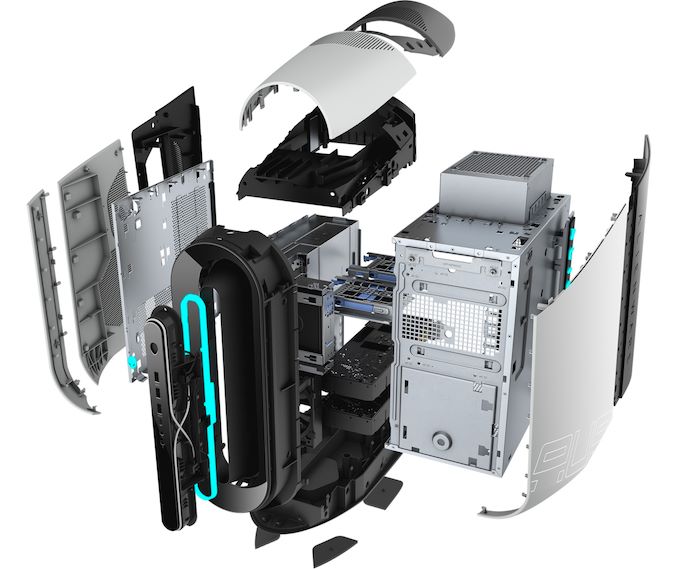
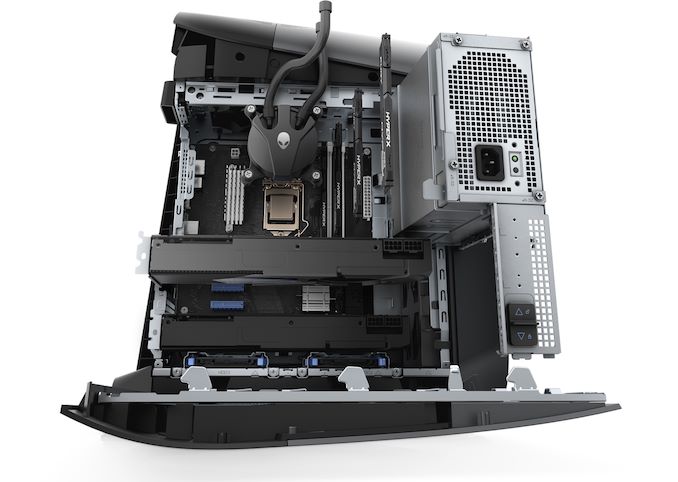
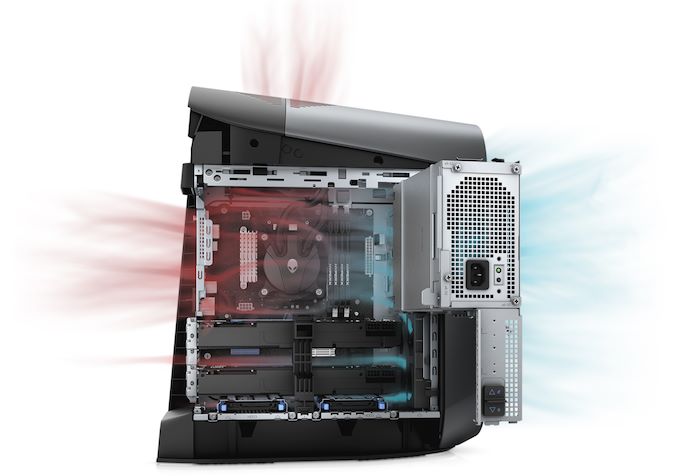
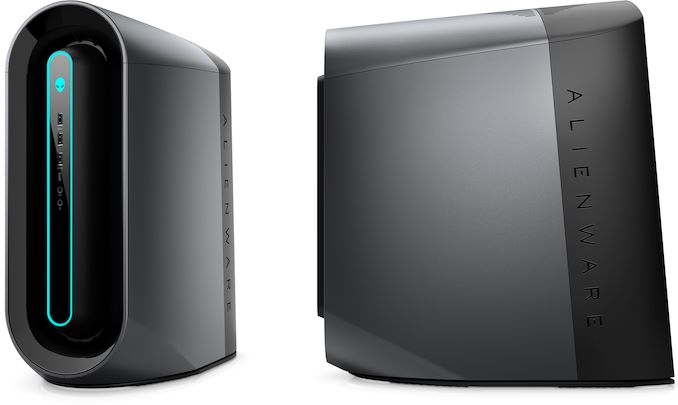
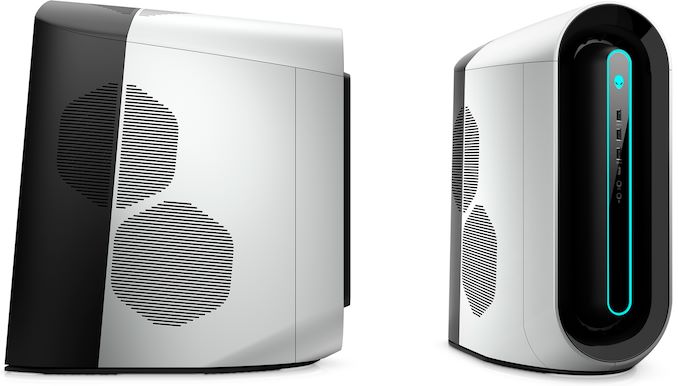









27 Comments
View All Comments
Destoya - Thursday, August 22, 2019 - link
I'm definitely not the target customer for this but it's pretty funny that with all the extra plastic design junk on it that this ends up being essentially the same size as a full ATX mid-tower case. GPU airflow looks fairly poor as well.DanNeely - Thursday, August 22, 2019 - link
I think it's going to still be smaller than most full ATX cases. The curved dome top adds a few inches of height, but it puts the PSU inline with the mobo instead of above it, so those more or less cancel out. Front to back should be within normal ranges too since even though 5.25 bays are all but dead and 3.5" drive cages are fading fast very few cases don't still have a few inches of space between the front edge of the mobo and the cases front panel.PeachNCream - Thursday, August 22, 2019 - link
I'm not the target market either, but I do agree that the design is pretty bad. In computing, the guts inside the case are all that matters. The box its in can be an uninteresting beige cube for all I care as long as it holds the parts in the right places and is easy to open so it can be cleaned or upgraded.Mr.Vegas - Thursday, August 22, 2019 - link
Let compare it vs Phanteks Enthoo Evolv XHeight 48cm vs 52cm
Width 22cm vs 24cm
Length/Depth 43cm vs 52
diehardmacfan - Thursday, August 22, 2019 - link
Now compare it to a not huge ATX case like an NZXT H500DanNeely - Monday, August 26, 2019 - link
Taller by about the extra height of full ATX. Wider by enough room to route cables behind the mobo and run a 120mm )140mm?) fan above the IO panel, longer by the size of the 3.5" drive cages it doesn't actually have.inighthawki - Thursday, August 22, 2019 - link
But just think of how big those full ATX cases are with all that extra plastic!TheinsanegamerN - Thursday, August 22, 2019 - link
What a horrible design. Look at all that wasted space up top. All that gaudy plastic. And it's a safe bet this thing will cost twice as much as a self built machine with similar internals.shompa - Thursday, August 22, 2019 - link
The thing is that self built machines with the same components are not usually cheaper. Main reason because Dell/all the other big companies get huge discounts on Intel CPUs. Stuff that cost 499 for us cost 250 for them. Only with different components you can get a cheaper computer (IE AMD).s.yu - Friday, August 23, 2019 - link
I generally don't buy MSRP, there are various ways to buy cheaper components but not a cheaper factory-customized model with very limited distribution channels.